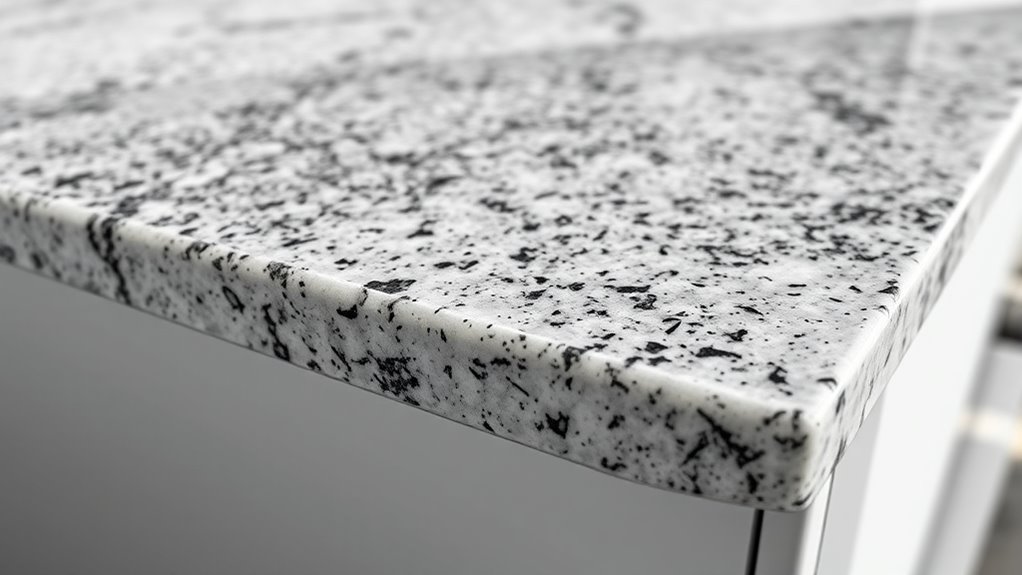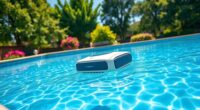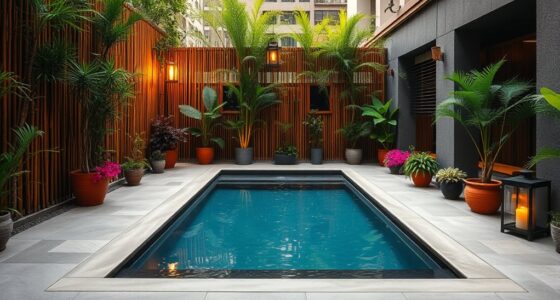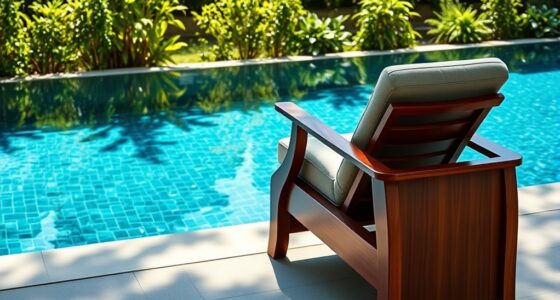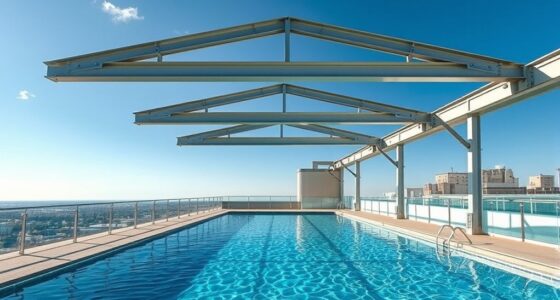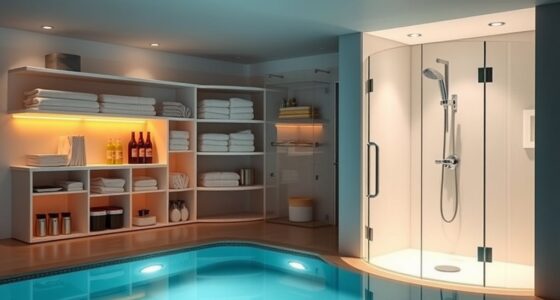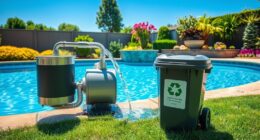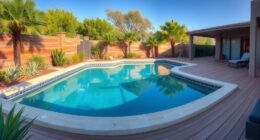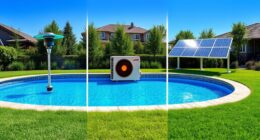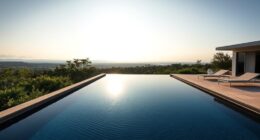Edge profiles like Bullnose and Cantilever matter because they affect safety, style, and durability in your projects. Bullnose offers a smooth, rounded finish that’s safe and inviting, while Cantilever gives a sleek, modern look with added support. Choosing the right profile depends on your space and needs. Knowing how to craft and maintain these edges guarantees your work lasts longer and looks professional—keep going to discover more essential tips and techniques.
Key Takeaways
- Edge profiles like bullnose and cantilever enhance safety, aesthetics, and durability of carpentry projects.
- Bullnose edges are rounded for a smooth, inviting look, ideal for countertops and furniture.
- Cantilever edges extend beyond surfaces, offering modern style and structural support.
- Proper materials and techniques ensure edge profiles are durable, smooth, and resistant to damage.
- Selecting the right profile depends on function, design style, and maintenance needs for the space.
Understanding the Importance of Edge Details in Carpentry
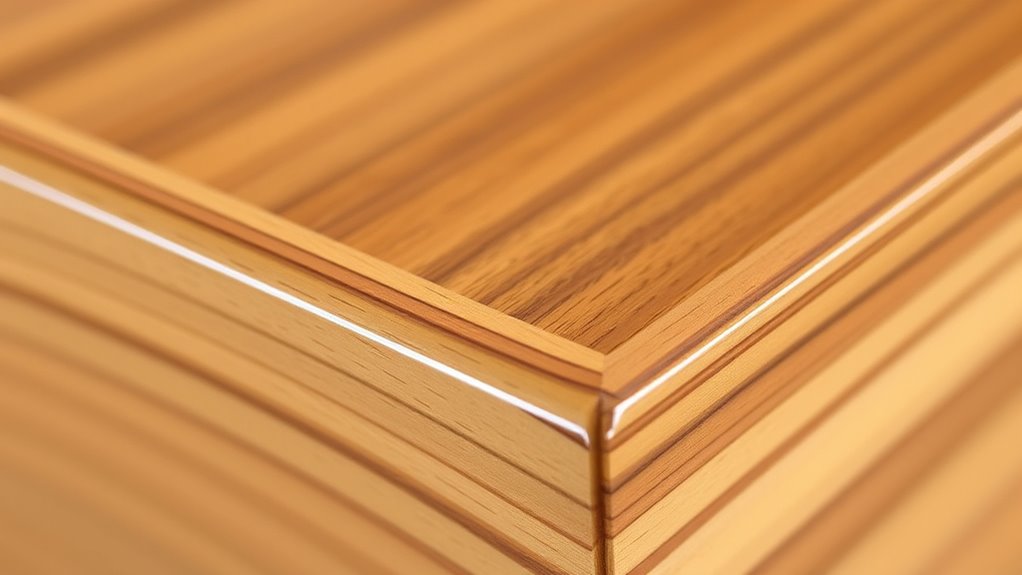
Understanding the importance of edge details in carpentry is essential because these small features can profoundly affect the overall quality and durability of your project. When you pay attention to edge finishes, you guarantee surfaces are smooth, safe, and visually appealing. Well-crafted edges prevent splinters, chips, and damage that can occur over time, extending your project’s lifespan. They also help your work look professional, elevating the overall aesthetic. Proper edge details can improve how different materials join together, creating a seamless, polished appearance. Ignoring these details might lead to weaknesses, gaps, or an unrefined look. By focusing on edge finishes, you demonstrate craftsmanship, boost durability, and achieve a more refined, long-lasting result. Small details, indeed, make a significant difference. Edge profiles play a crucial role in enhancing both the function and the style of carpentry projects.
Exploring Common Edge Profile Types: Bullnose and Cantilever
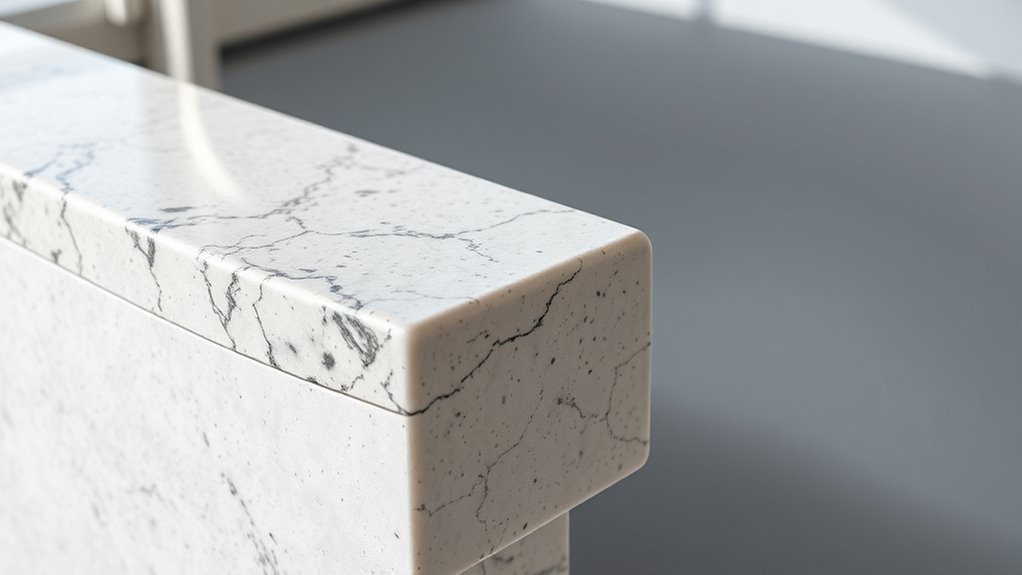
Choosing the right edge profile can markedly enhance both the look and function of your carpentry projects. Two popular options are bullnose and cantilever edges. A bullnose features a rounded, smooth curve that softens corners and creates a classic, inviting appearance. It’s great for countertops and furniture where safety and aesthetics matter. The cantilever edge, on the other hand, extends beyond the surface, offering a sleek, modern look with a slight overhang. It’s ideal for floating countertops or open shelving, providing structural support and visual interest. Understanding these types helps you select the right profile for your project’s style and purpose.
Choosing between bullnose and cantilever edges enhances safety, style, and functionality in your carpentry projects.
- Adds safety by eliminating sharp edges
- Enhances visual appeal with smooth or sleek lines
- Improves durability and resistance to chipping
- Complements different design styles
- Influences overall project functionality
- Edge profile selection can impact the overall durability and aesthetic harmony of your project.
Materials and Techniques for Crafting Durable Edge Profiles

Selecting the right materials and techniques is essential for creating edge profiles that withstand daily wear and tear. You should choose durable materials like solid hardwoods, engineered wood, or stone, which resist chipping and dents. For softer woods, applying protective finishes such as polyurethane or epoxy adds resilience. When crafting edges, use precise routing tools and sharp blades to achieve clean, consistent profiles. Clamping pieces tightly ensures stability during shaping, preventing chips or uneven edges. Sanding the profile smoothly eliminates rough spots, reducing the risk of damage over time. For added durability, consider reinforcing edges with bonding agents or laminates. Combining high-quality materials with skilled techniques ensures your edge profiles remain attractive and functional, even after years of use. Additionally, understanding the importance of proper maintenance can extend the lifespan of your profiles and keep them looking their best over time.
Practical Tips for Selecting the Right Edge Profile for Your Space
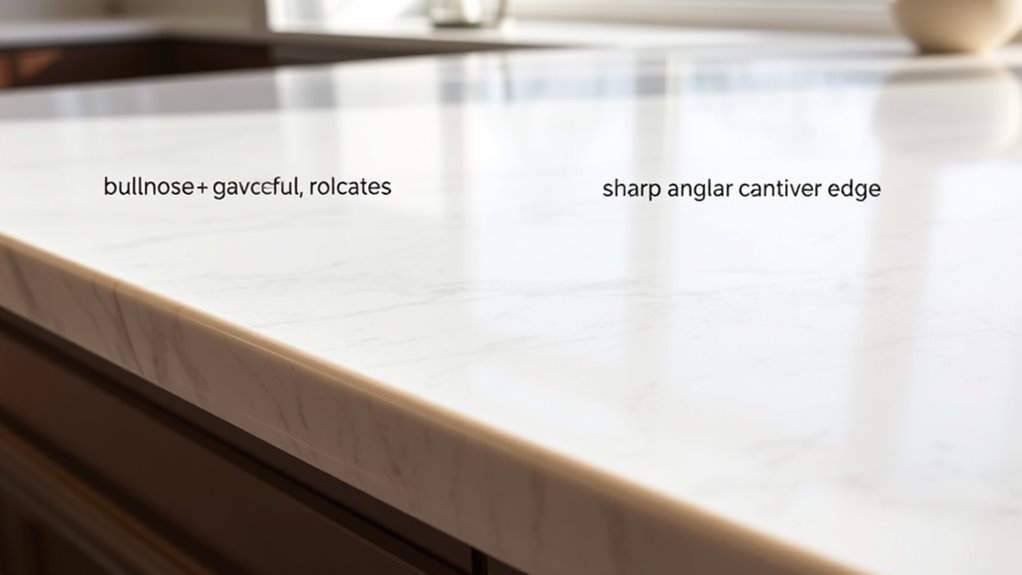
When deciding on the right edge profile for your space, consider both the functional needs and aesthetic style of the area. Think about how the edge will be used daily and the overall look you want to achieve. For high-traffic or safety concerns, opt for more durable or rounded profiles like bullnose. If you prefer a modern, sleek appearance, sharp or chamfered edges might suit you better. Match the profile to your existing decor, whether classic, contemporary, or eclectic. Additionally, consider the material’s ease of maintenance and how well it complements other surfaces in the room. Incorporating space optimization principles can help ensure your chosen edge profile enhances both form and function effectively.
Maintenance and Care of Edged Surfaces to Ensure Longevity
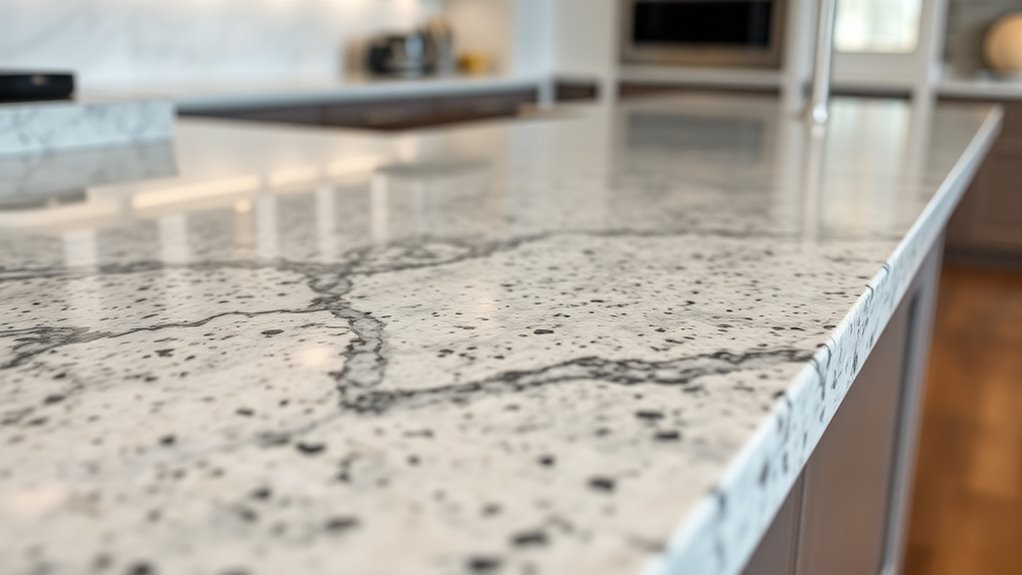
Proper maintenance of edged surfaces is essential to keep them looking their best and to extend their lifespan. Regular cleaning prevents dirt and grime from building up, which can cause scratches or dullness. Use soft cloths and mild cleaners suited for your surface type—whether stone, wood, or laminate. Avoid harsh chemicals that can damage edges or finishes. Seal porous materials periodically to prevent staining and moisture infiltration. Be cautious when moving heavy objects to avoid chipping or cracking the edges. Address spills immediately to prevent staining or warping. Inspect edges regularly for chips or damage; repair minor issues promptly to prevent further deterioration. Additionally, understanding proper edge profile selection can help reduce maintenance needs and improve durability. Proper care guarantees your edged surfaces stay beautiful and functional for years to come.
Frequently Asked Questions
How Do Edge Profiles Influence Overall Room Acoustics?
Edge profiles considerably influence your room’s acoustics by affecting sound reflection and diffusion. Rounded edges, like bullnose, soften sound waves and reduce echoes, making the space feel warmer and more comfortable. Sharp or angular edges, on the other hand, can cause sound to bounce unpredictably, leading to potential echoes or dead spots. Choosing the right edge profile helps you optimize sound quality, creating a more balanced and enjoyable acoustic environment.
Can Custom Edge Profiles Be Integrated Into Existing Furniture?
Imagine a modern-day artisan in a rustic workshop, crafting a masterpiece. Yes, you can integrate custom edge profiles into existing furniture. You’ll likely need a professional with specialized tools to carefully modify or refinish the edges, ensuring a seamless match with the original design. Custom profiles add personality and cohesion, transforming your furniture into a unique statement piece that reflects your personal style.
Are There Eco-Friendly Materials Suitable for Intricate Edge Designs?
Yes, you can use eco-friendly materials for intricate edge designs. Bamboo, recycled glass, and reclaimed wood are excellent choices because they’re sustainable and versatile. These materials can be shaped into detailed profiles while minimizing environmental impact. When selecting, consider durability and workability to guarantee they meet your design needs. By choosing eco-friendly options, you create beautiful, unique pieces that are both stylish and kind to the planet.
How Do Edge Profiles Affect the Resale Value of a Property?
Imagine your home as a finely tailored suit—every detail, including edge profiles, enhances its appeal. When you choose classic or modern profiles, you boost your property’s charm and perceived value. Well-crafted edges signal quality and attention to detail, attracting buyers who appreciate durability and style. In short, your choice of edge profile can make your property stand out, potentially leading to quicker sales and higher offers.
What Are the Latest Technological Advancements in Edge Profile Manufacturing?
You should know that the latest technological advancements in edge profile manufacturing include CNC machining, which offers precise and customizable cuts, and digital templating, enabling quick and accurate design replication. Additionally, laser technology improves detail and finish quality, while 3D printing allows for complex, innovative edge profiles. These innovations help you achieve consistent, high-quality results efficiently, ultimately elevating your project’s aesthetic and functional value.
Conclusion
Choosing the right edge profile enhances both the beauty and durability of your surfaces. Did you know that properly finished edges can extend the lifespan of your materials by up to 30%? By understanding options like bullnose and cantilever, and applying the right techniques, you ensure your craftsmanship stands the test of time. So, pay attention to edge details—they’re more than just finishing touches; they’re essential for lasting quality.
